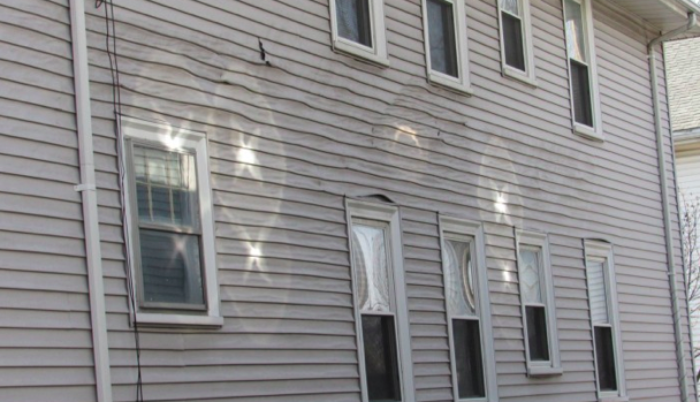MARCHING INTO SPRING: 6 PORCH IDEAS THAT MAKE YOU WANT TO BE OUTSIDE
Enjoy the beauty of the season from the comfort of your own doorstep with some fresh design tips.
READ MOREHomes located in cold climates have special needs that homeowners in other areas may not be aware of. Deep cold can affect every part of your property, including your façade or siding.
In fact, many types of siding, including vinyl, brick, wood have all have reported issues in cold climates. So, a homeowner looking to replace their siding with new, lower maintenance steel may wonder how it will perform in the same cold climate. Steel siding is ideal for cold climates because it doesn’t have the issues that other materials often face.
One of the biggest issues homeowners in cold climates face is cracking siding during the cold winter months. Depending on the material installed, this can be caused by one of a few things.
Moisture can enter the pores or cracks of the material and expand when it freezes, causing a larger crack that eventually compromises the siding. Or, the material itself can simply freeze and crack, which is the biggest problem of vinyl siding located in colder climates.
In both instances, the results are the same: large cracks in the siding, which allow more moisture to infiltrate, causing further problems such as mold, leaks and wood rot. The cracked siding also has a negative impact on the home’s curb appeal. Steel siding is non-porous, so it won’t absorb moisture, freeze and crack. It also won’t freeze solid the way that vinyl can, so no matter how cold the climate gets, your siding will remain in great condition.
If you live in a cold climate, then it’s likely that you want substantial insulation behind your siding as the first defense against the cold. Not all sidings are easily insulated, however, and many may not get the proper amount to truly make a difference to your home’s energy performance.
Steel siding is designed to float along your home’s exterior walls, which means that it can accommodate sufficient amounts of exterior insulation beneath it. And no matter how well you insulate, the siding won’t bulge or warp as it moves along the walls of your façade, so you can maintain the good looks of your home, while you increase its efficiency at the same time.
There is a unique issue with vinyl siding that homeowners who live in cold sometimes climates face. The material can often melt if the home is located too close to a neighbor’s windows. Homeowners living in cold climates often try to insulate their homes against the cold, which includes using energy efficient windows with low-E coating and double panes of glass.
Unfortunately for some homeowners whose neighbors have invested in these new windows, the sunlight hitting the insulated glass is reflected back in a concentrated beam. When this super concentrated UV light hits the vinyl siding of the house next door, it actually heats up the vinyl to its melting point, causing the siding to warp and melt.

Photo by Boston home inspector Donald Lovering
Steel siding has a much higher melting point than vinyl, so even if your neighbors have invested in energy efficient glass, you won’t have to worry about damage to your siding.
Steel siding is also fire resistant, so the excessive heat these windows can generate won’t pose a fire risk either. In fact, steel siding is exceptionally durable, as well as flame and insect resistant, so it can help protect your home from a number of external threats, while it enhances its appearance at the same time.
Homeowners who live in cold climates understand the damage a freeze/thaw cycle can cause. Freeze/thaw cycles occur when water infiltrates a material such as wood, freezes, and expands. Then melts, penetrates new areas and freezes again.
In wood siding this often results in the loss of paint from the surface of the siding. And with each new section of paint that peels away, new wood is exposed to absorb the water, freeze, swell, crack, and lose more paint. So, this vicious cycle continues until your siding is cracked, peeling, and warped—not a good look for any home.
Steel siding resists the freeze/thaw cycle, because it’s non-porous. The color won’t peel, the siding won’t crack or warp. Steel siding also has less shrinkage. While other materials will expand and contract, which can leave large gaps at the seams, when using steel your home will remain protected and in good condition all winter long, no matter how many freeze/thaw cycles it sees.
If you live in a cold climate, you understand the unique challenges your home faces. So, make sure you invest in a siding that can live up to the cold, and reside your home in steel. Steel siding is as attractive as it is durable, ensuring that you’ll have no troubles maintaining your home’s curb appeal and warmth year after year.
Download our Guide to Storm Season here!